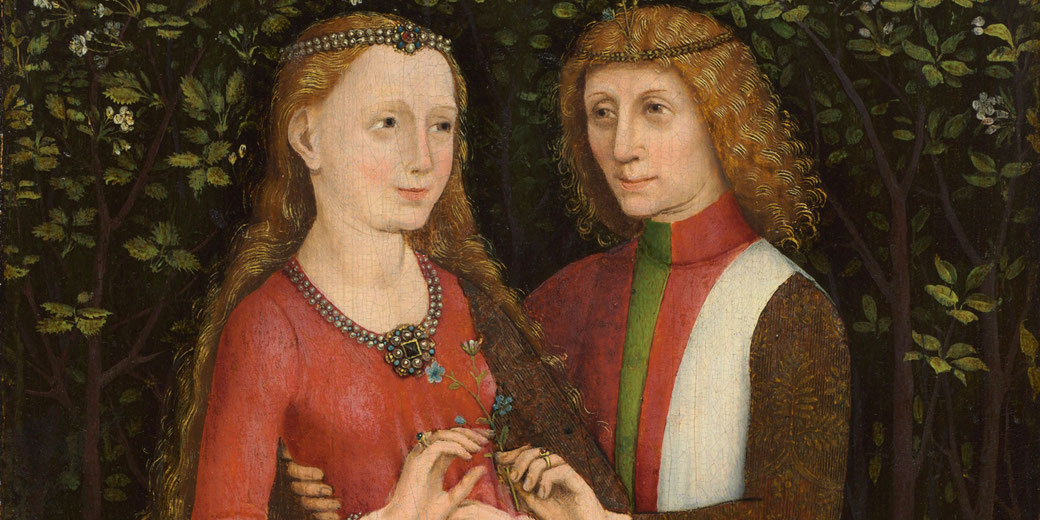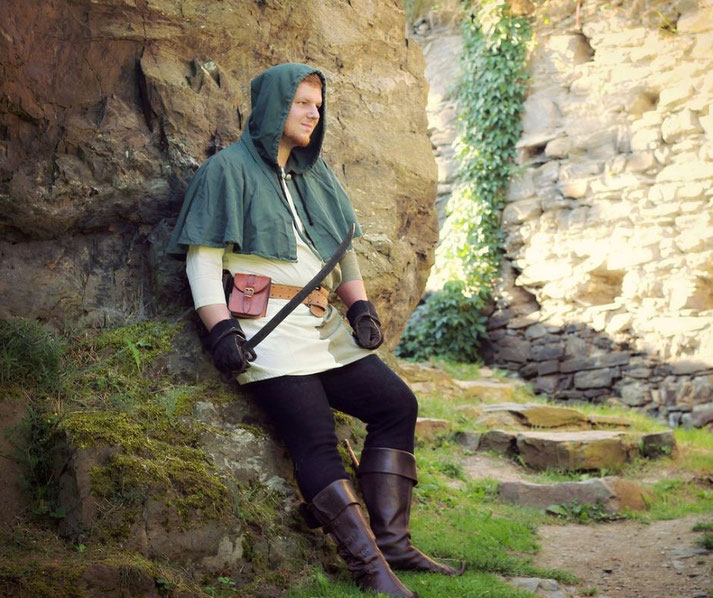Fashionably feudal: What did people wear in the Middle Ages?

Every tunic, gown, or cloak in the Middle Ages carried meaning beyond fashion because it visibly showed a person’s place in society, from the rough wool of farmers to the silk-lined robes of the elite.
The fabrics available, the dyes used, and the designs chosen showed a person’s wealth and status, and showed their trade connections.
As a result, people used clothing to make a clear statement about power.
The social role of clothes
Medieval society had a strict hierarchy, and clothing strengthened that structure by making a person’s rank easy to see.
Nobles wore clothes made from costly fabrics such as silk, velvet, and brocade, and they used dyes like crimson or deep blue that needed pigments such as kermes or woad that cost a lot to make and were out of reach for most people.
Fur trims, gold stitching, and jewelled items showed wealth and privilege to everyone.
Peasants, artisans, and labourers, who had no access to such richness, wore rough wool or linen in plain or dull shades, because their clothes had to focus on lasting use.
Lawmakers knew that fancy clothing let people pretend to higher ranks, so they made rules to stop that form of social climbing.
In England, the Statute Concerning Diet and Apparel of 1363, during the reign of Edward III, listed rules about which colours and fabrics each rank could wear.
Those rules kept ermine and other fine materials for the upper nobility, but records show that merchants often broke those restrictions.
Officials believed that those rules kept clear social divisions, and they made sure that clothing remained a clear sign of the order that shaped feudal society.

How the rich dressed
Noblemen and noblewomen spent many resources on their wardrobes, and they hired skilled tailors who created garments featuring fitted bodices, wide sleeves, and long trains that used large amounts of costly fabric.
Surviving examples include the fourteenth-century civilian pourpoint of Charles de Blois, which displays the detailed tailoring and decoration chosen by the wealthy.
Men wore tunics, hose, and surcoats, while women favoured long gowns that featured tightly laced bodices and decorated headpieces that displayed both rank and marital status.
Wealthy women covered their hair and neck with wimples and veils, and they attached these with decorated pins.
By the fourteenth century, both men and women wore the houppelande, which was a long robe with full sleeves that became very popular at court.
Shoes also showed wealth, because nobles chose styles that were not practical for poorer people.
The poulaines sometimes extended a few inches beyond the foot, which made them hard to walk in.
Some garments feature gold thread stitching that used real gold, which increased their cost.
Accessories completed the outfit, such as belts with metalwork, jewelled purses, and fine rings that all added to the sense of luxury.

Even the churchmen dressed in particular fashions
Members of the clergy followed strict rules for clothing that made their roles clear, and those rules varied by rank.
Priests and monks wore long habits or robes to show humility and devotion, but bishops and abbots had ceremonial vestments such as the chasuble and alb, which were made from silk or cloth of gold and which featured detailed stitching and precious stones.
Papal robes include the tiara used in important ceremonies, and they display a level of splendour that rivalled monarchs, which required large funds from cathedral treasuries and monastic estates.
Bishops also wore rings and carried croziers, and those items displayed their authority and added to their splendid look.
Monastic orders kept their own style through the colour and cut of their clothes, so people could know a monk’s order at a glance.
Benedictines wore black habits, and Cistercians used undyed wool. Each order preserved its traditions through those rules, and those garments strengthened loyalty to its way of life.
Church clothing served both a spiritual and a political purpose, because it showed the power and influence of the Church to ordinary people.
How commoners dressed in the Middle Ages
Peasants and townsfolk could not afford costly fabrics or bright dyes, so they wore clothes that local weavers produced from rough wool or linen.
Men wore tunics with belts at the waist, braies as undergarments, and hose or leggings made of cloth or leather, while women wore long gowns that included aprons or overdresses, which allowed them freedom of movement during work.
Married women covered their hair with a coif or plain veil, and unmarried women wore their hair braided or left it loose to indicate their status.
Clothes for lower classes had to last through hard use, so many garments required repeated mending rather than replacement.
People adapted their clothes to the seasons, and in winter they added cloaks and hoods made of thick wool that sometimes included fur from local hunts.
Dyeing fabrics used inexpensive natural materials such as onion skins or walnut shells, which gave them muted colours.
Their appearance came from necessity, and the style of peasant clothes remained mostly unchanged for centuries because practicality mattered most.

Truly strange fashion trends in the Middle Ages
The Middle Ages saw several odd fashions that moralists and preachers criticised as too much.
Some poulaines grew so long by the fourteenth century that regions such as England in 1363 issued laws limiting how far toes could extend.
Men’s tunics also became very short, and that change exposed their hose in ways many writers of the time called improper.
In later the Middle Ages, wealthy women wore tall cone-shaped hennins that rose more than half a metre, and those headpieces included long veils held by wire frames that trailed behind them.
Another unusual trend was slashing, where people cut outer garments to reveal bright fabrics underneath.
By the fifteenth century, that style spread across much of Europe, especially in Burgundy, and the resulting clothing used dyes that produced vivid colours such as scarlet and green.
Those fashions required real wealth, which extra fabric and skilled tailors alone could afford.
The differences in medieval men's and women's clothing
Men and women dressed in ways that clearly showed their roles and jobs. Men’s clothes focused on movement and readiness for battle, so tunics and surcoats fit close at the waist, and hose allowed them to move easily.
Armour and soldier styles shaped men’s fashion, and belts often held daggers or pouches, and jagged edges and shorter tunics matched an active life of fighting or training.
Women’s clothes showed modesty and wealth through the amount of fabric used. Gowns had long trains and full skirts that needed costly materials.
Changing fashions altered sleeve shapes, necklines, and head coverings, and France and Burgundy led court trends in the fourteenth and fifteenth centuries.
Girdles sometimes included enamel or semi-precious stones, and jewelled brooches and rings added decoration.
Whether a woman covered her hair or not told people her marital status.

What do you need help with?
Download ready-to-use digital learning resources
Copyright © History Skills 2014-2025.
Contact via email
With the exception of links to external sites, some historical sources and extracts from specific publications, all content on this website is copyrighted by History Skills. This content may not be copied, republished or redistributed without written permission from the website creator. Please use the Contact page to obtain relevant permission.





